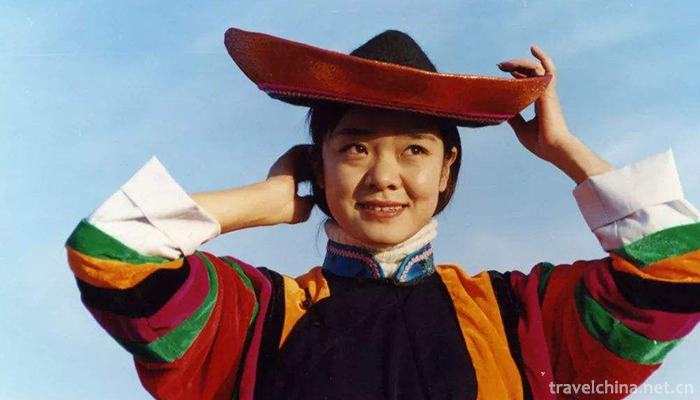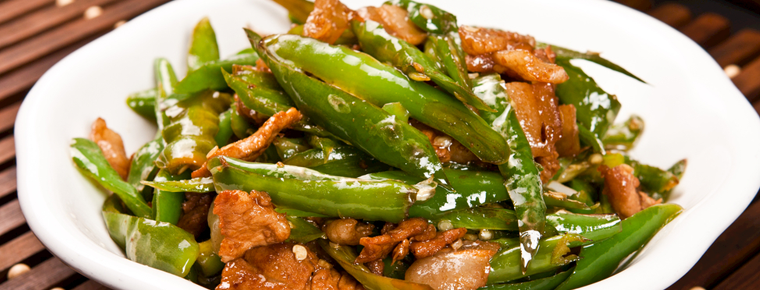2019-03-16

- By ChinaWiki.net
- Chinese Edition
- 2019-05-10
Larenbu and Jimenso
Larenbu and Jimenzou, Qinghai folk literature, one of the national intangible cultural heritage.
With vivid images, deep and solemn language and singing form, Larenbu and Jimenso described the love tragedy of the poor Larenbu and the pastor's sister Jimensoe, who developed from employer relationship to passionate relationship. Because of the obstruction of Jimenso's brothers and sisters-in-law, the love between the two lovers finally failed. The poem is composed of eight chapters. It is the crystallization of the collective wisdom of the working people of the Turkish nationality. It has a broad mass character and is the most popular narrative song sung by the Turkish people. It has different styles in different districts. In the way of singing, Larenbu and Jimenzo are mainly male-female duet, but they are different from the general question-and-answer duet. The melody is unique, the structure is clear and the level is distinct.
In May 2006, Larenbu and Jimenso were listed in the first national intangible cultural heritage list of folk literature category, item number I-29.
historical origin
Academic circles have different views on the generation of the narrative poem Larenbu and Gimensoe. Some scholars believe that this work has a long history, "the story took place in the period of the rise of Tu people's life in animal husbandry", and the content of the story "brings people to a remote ancient age". Some scholars believe that this work came into being relatively late, roughly in the late feudal society.
The heroes and heroines in Larenbu and Jimenso, one grazing cattle and one grazing sheep, can be seen that in the production activities of the Tus at that time, animal husbandry occupied an important position. In some editions of Larenbu and Gimensoe, it is written that Gimensoe's brother Abu, who has a thousand mu of land, a hundred flocks of sheep, ten courtyard houses, also employs long-term workers. A folk oral literature has a long process of development from germination to finalization. Detailed descriptions of Abu's family business are found in the earliest oral edition of Larenbu and Gimensoe, or later in Larenbu and Gimensoe. However, this detail shows that Abu is a typical feudal landlord image. From the other details of the works, we can also see that the Tu people described in the long poem have already had houses, formed a certain scale of villages, completely got rid of nomadic life, and achieved complete settlement. The Turks settled down and had cultivated land. A large amount of cultivated land was concentrated in the hands of a few people, forming a large landlord. These details show that the story of Larenbu and Gimensoe originated in feudal society.
Cultural characteristics
basic content
According to legend, Gimenso, a beautiful and kind Tujia girl, fell in love with Larenbu, a longtime shepherd for her brother. The two of them had a strong love for each other in their daily life of grazing together, so they settled down for life and became husband and wife in worship of heaven and earth on the mountain. But Jimenso's brother and sister-in-law were a pair of moneybags, so when they learned about this, they blocked him in every way, beating and cursing Jimensoe, and locked her in the house, forbidding her to meet him again. In order to break Jimensoe's miss, his brother put on Jimensoe's clothes and hid a sharp knife and ran quietly to Jimensoe. In Suo's tent, when Larenbu came back from grazing at night, he was stabbed to death by Jimenso's brother with a sharp knife as soon as he entered the tent.
When the people in the village prepared to cremate Larenbu according to the customs and habits of the Tus, they found that the body of Larenbu had not been burned for three days and three nights. When Gimenso heard the news, he broke through his brother and sister-in-law's obstruction and came to the crematorium. Gimenso threw his earrings and bracelets into the fire, but Larenbu's body was still burnt. Looking at such a scene, Jimenso suddenly woke up, so she sings with great indignation: "You don't come, I know, I hope I can burn with you soon; five feet of body to give you, a burning to the heavens and the earth." As soon as Gimensoe finished singing, he jumped into the fire, which burned up immediately, and the body quickly turned to ashes.
However, Jimenso's brother buried their ashes on both sides of the Shahe River, but three years later, a julibrissin tree grew on both sides of the Shahe River. The hard-hearted brother of Jimenso chopped the two trees into firewood, but it was amazing that the fire turned into a rainbow and flew out of the chimney a pair of beautiful Mandarin ducks. The mandarin ducks rushed to the vicious brother, pecked him blind, and flew away together until they reached the mountain forest where Jimenso and Larenbu were grazing.
Content classification
The long folk narrative poem Larenbu and Jimenzou, which was sung in Turkish, has been sorted out and published in various Chinese texts. As a living oral narrative poem, there are two versions of Larenbu and Gimensoe, one is pure rhyme version, the other is rhyme alternate version. There is also a folk legend in prose form, which can be regarded as a derivative version of the narrative poem Larenbu and Gimensoe, and different versions of Larenbu and Gimensoe are circulated in different Tu communities. Even different folk singers sing different versions of Larenbu and Gimenso. However, as a long folk narrative poem, no matter which version is circulated in any region, its story frame and basic plot have not changed much.
Inheritance mode
The 300-line narrative poem Larenbu and Jimenzou is written and sung by the Turkish people. It has been passed down from mouth to mouth among the masses. It is still a living form of oral literature. It mainly spreads in Weiyuan, Donggou, Dongshan, Danma and other areas where mutual assistance exists. The poem is divided into eight chapters and has different styles in different areas. In the way of singing, male and female duet is the main, but unlike the general question-and-answer duet, the tune is unique, the structure is clear and the level is distinct.
Singing form
The poem is composed of eight chapters. It is the crystallization of the collective wisdom of the working people of the Turkish nationality. It has a broad mass character and is the most popular narrative song sung by the Turkish people. It has different styles in different districts. In the way of singing, Larenbu and Jimenzo are mainly male-female duet, but they are different from the general question-and-answer duet. The melody is unique, the structure is clear and the level is distinct.
Inheritance and protection
Inheritance value
"Larenbu and Jimensoo" is sung entirely in local language. It originated in the Tu nationality area and grew and developed in the Tu nationality area. It is rooted in the traditional culture of the Tu nationality. It is popular with the local people of both Tu and Han nationalities. The main characters in the story, such as Larenbu, Jimenzo, Brother and Sister-in-law, have distinct personality characteristics, extensive popularity and unique national characteristics, which provide vivid materials for ethnology, linguistics and Tu sociology. In addition, the story described in Larenbu and Jimenso reflects the Turkish people's gradual shift from nomadic production mode to agricultural production mode, which has important historical research value.
Inheritance status
With the passage of time, most of the inheritors of this folk long poem have passed away one after another. Young and middle-aged people under 50 can hardly sing, and there are few successors. They are in urgent need of rescue and protection.
Inheriting characters
He Quanmei, Female, Tu Nationality, Muzhu Tu Autonomous County, Qinghai Province. In June 2007, He Quanmei was selected as the representative successor of the first batch of national intangible cultural heritage projects and declared by Huzhu Tu Autonomous County of Qinghai Province. Project Name: Larenbu and Jimenso.
protective measures
The state attaches great importance to the protection of intangible cultural heritage. On May 20, 2006, Larenbu and Jimenso were listed in the first batch of national intangible cultural heritage lists with the approval of the State Council.
social influence
Important activities
On May 29, 2015, the first Rhododendron Cultural Tourism Festival in Huzhu Tu Autonomous County of Qinghai Province, the only Turkish Autonomous County in China, opened in the Langshidang Scenic Area of Huzhu Beishan and sang "Larenbu and Jimenso".

Ask a Question
Your email address will not be published.



0 Questions